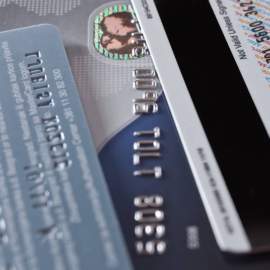
Chapter 13 Bankruptcy

As it has well been documented, filing for bankruptcy requires the proper documentation to be filed in bankruptcy court. In filing Chapter 13 bankruptcy, the initial application must be passed along to the court, along with a $235 case filing fee and a $39 administrative fee of which negligence could result in the forfeiture of the case itself. On top of this, as with all other varieties of bankruptcy, there are four records that must be attached to Chapter 13 bankruptcy forms, such as the official petition relating to an accurate depiction of the debtor's financial status. They are:
1) a list of all debt-oriented contracts and unexpired leases;
2) a breakdown of income through employment versus living expenses;
3) a compilation of all existing creditors and loans outstanding; and
4) an overall statement of fiscal affairs.
As for the plan creation and confirmation stages, the plan itself is one of the requisite forms in the Chapter 13 bankruptcy process. As stated, the plan (devised by the debtor) must be submitted to the court within two weeks of submitting the official petition. In a meeting of creditors shortly thereafter, it must be examined by all interested creditors. For up to 90 days after the fact, the creditors will then have their own responsibility to file with the court their claims on monies owed to them by the debtor. They are also permitted to attend the actual plan confirmation hearing.
Sometimes, meanwhile, depending on the debts specified, a petitioning party filing Chapter 13 bankruptcy may also request a discharge of existing loans with the fulfillment of payments outlined in the confirmed debt adjustment plan. Imaginably, this measure is very much a conditional one. To be eligible for waiver of remaining debts, a debtor may stay on top of all regularly scheduled alimony and child support installments, as well as complete a financial counseling course.
Filing for Chapter 13 Bankruptcy
1. Chapter 13 Bankruptcy is a specific chapter of the United States Bankruptcy Code, which is the formal set of rules regulating bankruptcy filings in the United States.
2. A Chapter 13 filing enables an individual to partake in a financial reorganization or repayment plan. Similar to the other forms of Bankruptcy filings, a Chapter 13 filing is initiated when an individual or business entity faces insurmountable debts.
3. The goal of a Chapter 13 filing is to enable an individual or business entity debtor who receives income to reorganize their debt payments through a court-approved plan. This plan is in direct contrast to a Chapter 7 filing, which offers an immediate and complete relief of oppressive debts.
4. A Chapter 13 filing creates a repayment plan for individuals or entities in debt. This repayment plan offers those in debt more time to pay off their debts and the ability to fulfill their obligations through incremental pay periods.
5. As a result of this structure, a Chapter 13 filing can effectively halt foreclosures. A foreclosure would be reinstated upon completion of the restructured payment plans.
6. A Chapter 13 program documents in detail the treatment of all liens, debts, and the secured status of all the assets and liabilities owned or owed by the debtor.
7. In order for one to file for a Chapter 13 Bankruptcy, the debtor must meet the following requirements: provide a number of assets or payments to the underlying creditors that would equal a similar amount had the debtor filed for a Chapter 7 Bankruptcy liquidation.
8. The debtors must also promise to pay the creditors in full, or commit all disposable income into their Chapter 13 restructure plan for at least three years.
7 Steps on How to File for a Chapter 13 Bankruptcy
1. To file for a Chapter 13 Bankruptcy plan, you must first gather all information on your underlying debts.
2. The necessary documentation includes: revolving credit accounts (such as credit cards or medical bills), all forms of credit involving capital (i.e. house or car note), and lastly all taxes owed to the State or Federal Government. In addition to all this information, you must also submit any court documents—these documents are necessary if someone is suing for failure to fulfill a debt obligation.
3. Before filing, you must rule out all other options. In essence, filing for bankruptcy is a last resort. When an individual files for bankruptcy, their credit rating will be negatively affected for years.
4. After you have decided that filing is the best option, you must meet with an attorney. Find a legal professional through a referral or search. Regardless of the method, you must include an attorney in your filing because bankruptcy is a complicated procedure.
5. To initiate the claim you must obtain a certificate from a credit counseling agency. The credit agency will take your current income and evaluate the figures with your current minimum payments and living expenses.
6. Once this is achieved, you must file a motion in Bankruptcy Court. Your legal professional will file the motion, but you must satisfy all fees that are required with the claim.
7. The tangible process begins by attending a scheduled hearing. A representative of the bankruptcy trustee will swear the documents in and go over the determined budget with the attached documentation and the legal professionals.
NEXT: Chapter 13 Bankruptcy Rules



















